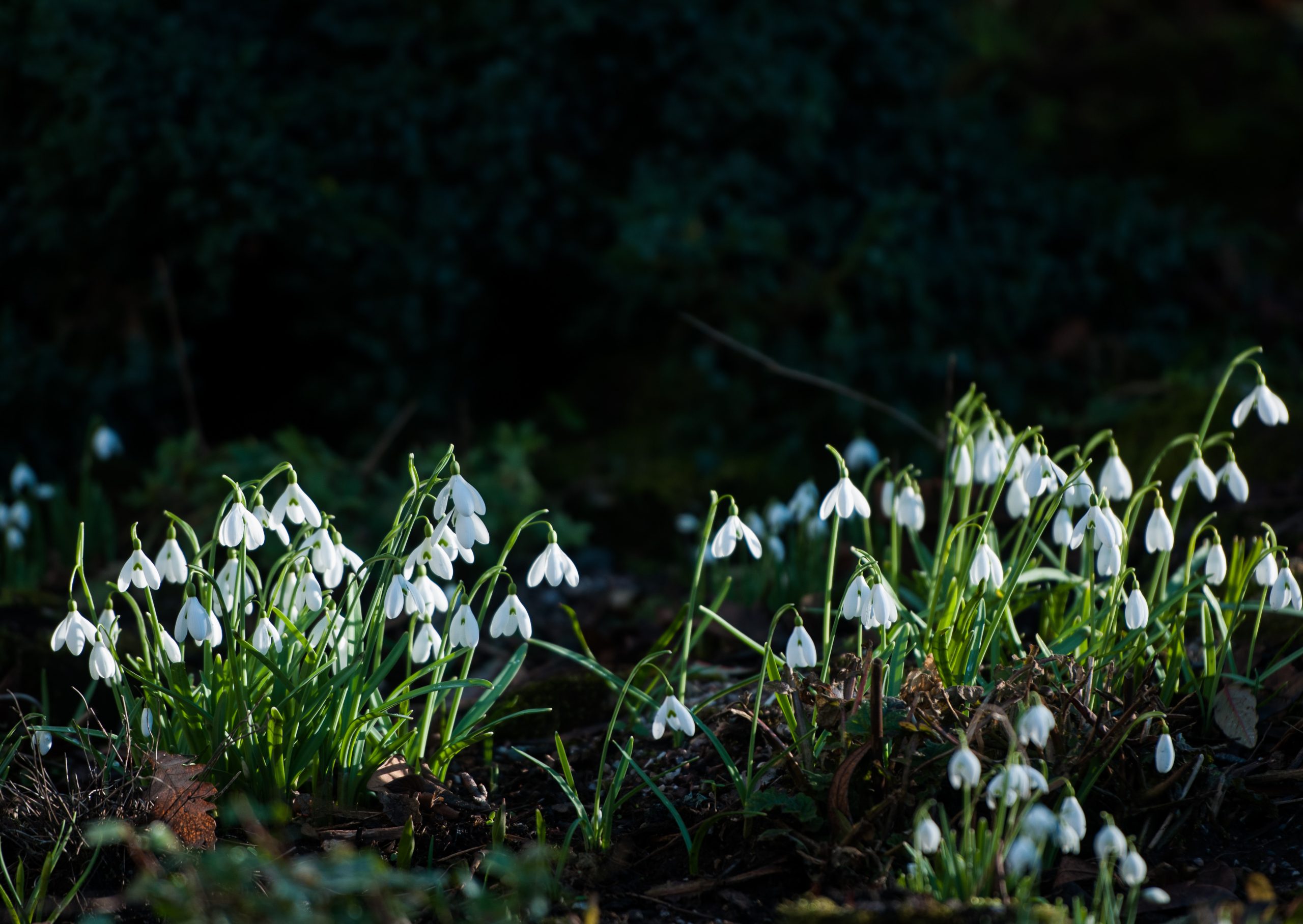Spotlight on snowdrops: The Old Vicarage, West Sussex

The Old Vicarage in the pretty village of Washington in West Sussex, is just one of the stunning snowdrop gardens opening as part of the National Garden Scheme’s Snowdrop and Spring Flower openings in February 2026 – and Sussex-based galanthophile and snowdrop expert, Simon Hollingworth, talks us through the varieties of snowdrops in the garden and their fascinating history.
“The first snowdrops to flower here are the Galanthus Elwesii Hiemalis Group. They have large flowers and sometimes flower well before Christmas, but their wide glaucous leaves are still decorative throughout the season. There are other types of Elwesii in flower in February and when first found, they were called the giant snowdrop and named after Henry J Elwes, who discovered it in the mountains near Smyrna. He was a large man with a great beard and a dominant character, with a loud booming voice. His trip to Turkey had replaced a planned one to Cyprus at very short notice, so his discovery must be regarded as slightly fortuitous. Like many Victorians/Edwardians, he combined the privileged life of a country gentleman with a wide range of interests. His snowdrop collection, added to by his descendants over the years, can still be seen at Colesborne Park in Gloucestershire today.
“At The Old Vicarage in Washington, Sussex, you can see G. Elwesii ‘Benhall Beauty’. This has a bluish tinge to its glaucous foliage. Instead of one green inner marking it has two, and the flowers are tall, long and elegant. The famous plantsman Edward Augustus Bowles of Myddleton House, who was described as too delicate for public school, named it after the garden of John Gray, another galanthophile, as the bulb originated there in Benhall, Saxmundham. Originally, Bowles was destined to enter the priesthood, but the death of a brother and sister from tuberculosis prevented this. He took up travelling, in part because of acute hay fever, and focused mainly on mountainous regions in late spring to mitigate his complaint. While abroad he gathered plants and expanded his interest in horticulture. He was particularly famous for collecting and growing crocus, snowdrops and colchicum. Bowles eventually inherited Myddleton in 1918. The terms of the inheritance prevented him from selling it, and he found it well nigh impossible to maintain the house properly due to a lack of income. Nevertheless, the position Bowles found himself in meant that he could dedicate himself to developing his garden, despite being self-taught, having had no formal horticultural training.
“Galanthus Nivalis and its many variants and hybrids come out at the end of January at The Old Vicarage and are at their best in February forming an absolute mass of white, flowing down the Northern slopes of the garden into the woodland area. One of the large-flowered variants here is ‘Magnet’. This variety has a long pedicel, the part which joins the flower to the stalk, making it very prone to waving in the wind. This plant originated in the garden of James Allen, ‘The Snowdrop King’ nursery-man from Shepton Mallet. Allen was one of the first people to actively hybridise snowdrops, and in Victorian times he had the best collection in the country.
“We have a war to thank for the large-scale introduction of Galanthus Plicatus into our gardens. There are several clumps at The Old Vicarage with the extreme edges of its glaucous leaves folded back. It seems surreal that while our soldiers were either being killed by or killing Russians in the Crimea, they were also astonished to find this snowdrop flowering on the battlefields. In the midst of the bloody carnage of engagements such as Balaclava and Sevastopol, it’s extraordinary that soldiers actually dug up snowdrops in the wild and brought them home with them! One of the most famous snowdrops to be introduced after the Crimean War is G. Plicatus ‘Warham’, the first snowdrop to be awarded a First Class Certificate by the Royal Horticultural Society.
“We hope you enjoy your visit to The Old Vicarage, which opens every Thursday 5 Feb to 1 Oct (10.00am-4pm). Pre-booking essential, so please click here for more information. As is customary for a National Garden Scheme garden, there will be tea and delicious cakes to enjoy, as well as the snowdrops!”


















